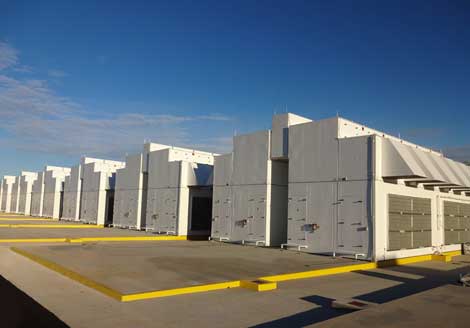Microsoft to Build Out, Probably Upgrade, Boydton Data CenterMicrosoft to Build Out, Probably Upgrade, Boydton Data Center
The timing of the company’s move points to the likelihood that it may be upgrading its facility near Richmond and Raleigh for its “Generation 5” DC platform.

In the fifth expansion to its data centers there in six years, Microsoft will invest another $251.6 million to expand its data center facility in Boydton, Virginia, located in Mecklenburg County on the state’s south border between Richmond and Raleigh, North Carolina. This according to announcement from Gov. Terry McAuliffe, just hours after the former Democratic National Committee chair absorbed the news of his party’s stunning losses in the national election.
“Microsoft has now invested nearly $2 billion in its Mecklenburg facility and created over 250 jobs since 2010,” stated Gov. McAuliffe, in a statement released Wednesday afternoon.
Microsoft’s move comes just weeks after unveiling “Generation 5” of its modular data center design, at its cloud farm in Quincy, Washington, about a hundred miles east of corporate headquarters. This design blueprint replaces the compact IT-Pre-Assembled Container (IT-PAC) design pattern, on which the Boydton data center was originally built.
Although Microsoft has yet to confirm this news publicly (governors often get to reveal the news first), it would appear that Microsoft has a plan under way to replace IT-PAC with Gen-5, with Boydton being next on the company’s agenda.
IT-PAC was an ambitious project which first began in Boydton in 2010, comprised of lightweight steel sheds containing pre-constructed compute and power units. At first, they looked like camper trailers, or changing rooms for movie stars on location. Three years later, the system looked somewhat more modernized, like efficient, lopsided building blocks back-to-back in several rows.
Open air contributed to the cooling apparatus of IT-PAC, appearing to rely on the environment itself to help out with maintenance and upkeep. That air was pumped in through a damp film, cooling it along the way, and reducing water consumption to a small fraction of traditional data centers.
The company began rolling out IT-PAC in Quincy after having drawn complaints from state officials, both for its tremendous power draw and its reliance upon diesel generators for supplemental power. According to a 2012 New York Times report, prior to IT-PAC’s rollout, Microsoft had been granted enough permits by the Washington State Ecology Dept. to produce one-third the wattage of a nuclear power plant.
But “Generation 5” moves servers out of the shed and back onto the slab. It does borrow many of the cooling lessons learned from IT-PAC, but reportedly using a design that doesn’t require the use of potable water.
IT-PAC did have the benefit of being upgradeable and expandable in modular ways. It was that program that permitted Microsoft to re-invest in Virginia repeatedly, beginning with the initial $499 million expansion, followed by $150 million in 2011, $348 million in 2013, $346.7 million in 2014, and $402.4 million in 2015, according to the Governor’s office.
At press time, Microsoft had not responded to Data Center Knowledge's request for information, though we will update you when it does.
Read more about:
North AmericaAbout the Author
You May Also Like









